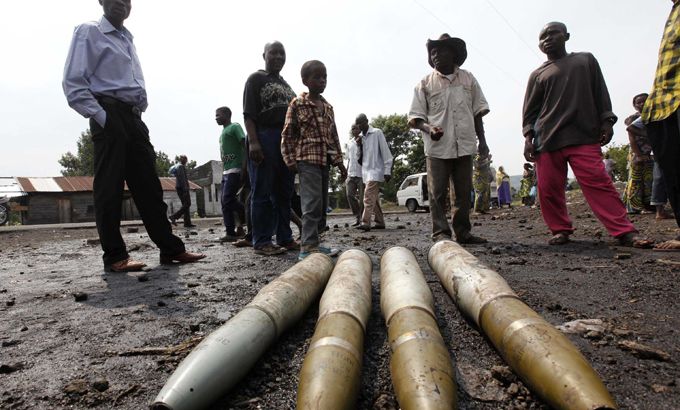
M23: Willing to pull back?
The rebel group in the Democratic Republic of Congo says it will withdraw but only under certain conditions.
The M23 rebel group in the Democratic Republic of Congo says it is prepared to withdraw from Goma and other parts of Eastern Congo.
|
“The problem the M23 is facing is that while they have military power and control of the region – they do not have popular support. And some of the claims they are making are hard to support – namely that they can march all the way across the country and get all the way to Kinshasa. They just do not have the popular support to do this. They also claim to represent all the Congolese Tutsis but that is not true either.“ – Mvemba Phezo Dizolele, Johns Hopkins University |
And it looked as though they were close to reaching a deal but they are now insiting on pre-conditions, and new fighting may put the whole plan in jeopardy.
The group’s full name is the March 23 Movement, referring to the date peace accords were signed in 2009 between the DR Congo’s government and the National Congress for the Defence of the People (CNDP), a rebel militia comprised mostly of ethnic Tutsis.
M23’s fighters are believed to be led by Bosco Ntaganda, nicknamed “The Terminator”, who is now wanted by the International Criminal Court for allegedly conscripting child soldiers.
M23 rebel fighters have been consolidating their positions south of Sake, which is 25km west of Goma – the key eastern regional capital which they captured a week ago.
The rebel fighters are also in place at Kilolirwe. And Congolese government troops are in Minova and are occupying positions south of Shasha.
Earlier Jean-Marie Runiga, the political leader of M23 said Goma is not the problem: “The major concern of the M23 is not the town of Goma, that is not our major concern. We are fighting to find solutions to the problems of the democratic republic. If Goma becomes a sticking point, it would make people believe that our major concern is Goma … I think the questions I raised here are national matters.”
The African Union has said it is considering deploying peacekeeping troops in the eastern DR Congo. The regional body says the troops would mainly come from Tanzania, which has expressed its readiness to commit 800 soldiers to monitor the conflict.
It is not the first time the African Union has discussed sending international troops to DR Congo. In July, it said it was ready to send peacekeeping troops if needed.
The United Nations already has a peacekeeing force of 19,000 soldiers in the country, which is the largest and most expensive peacekeeping operation in the world.
So, under what conditions will M23 fighters pullout of Goma and other parts of eastern DR Congo? And would this pullout be the beginning of the end of the crisis in the country?
Inside Story, with presenterJames Bays, discusses with guests: Richard Dowden, director of the Royal African Society; and Mvemba Phezo Dizolele, a lecturer at the School of Advanced International Studies at Johns Hopkins university.
|
“I think that idea of marching on Kinshasa is absolutely ridiculous – not least because they did it in 1996 – but that was the Rwanadan army itself and some [contingent of the] Ugandan army plus the people from that region and they marched on Kinshasa but Mobutu, who was then the president had already fled and they were able to take it over. When they went back in 1998 the Congolese generally, were so apalled that they were being invaded by these tiny countries on their eastern border that it has made the Tutsis very, very unpopular in the whole [of] Congo and there is a very nasty feeling towards them – and the idea that they can just walk across the country and ‘liberate’ it is ridiculous.” Richard Dowden, Royal African Society |